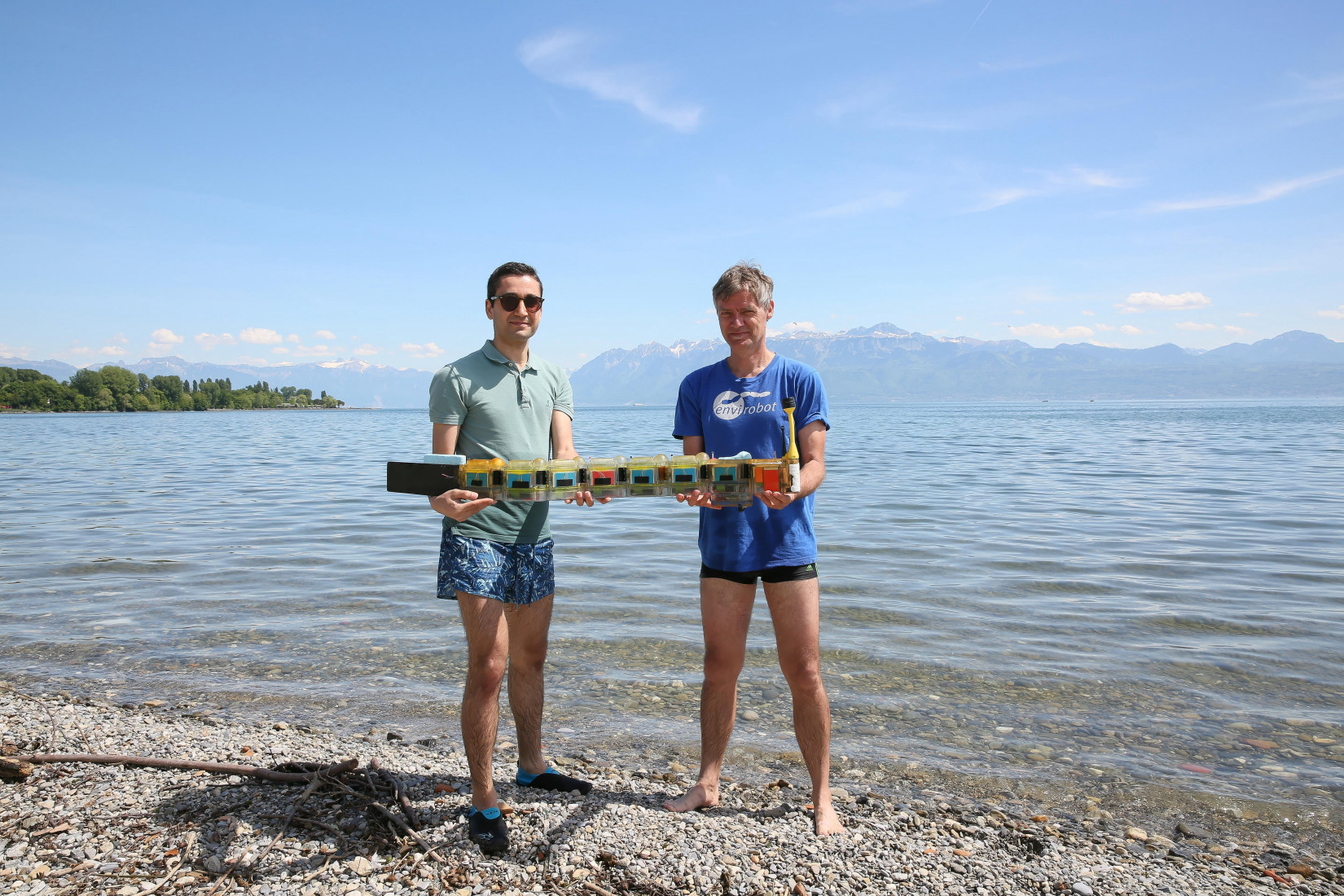Bacterial biosensors
One of the main past research focuses in the lab was the development and application of bacterial biosensors.
We designed and engineered bacteria to react to the presence of chemical signals with the production of an easily quantifiable reporter protein.These can be used as simple alternative measuring methods for environmental pollutants or toxicity.
Our projects focused on integrating bioreporter strains in microfluidics platforms, on designing new sensory proteins in order to achieve different effector recognition capabilities, on developing faster-reacting sensors, and on their field-testing.
On the right a picture of the Envirobot: the 'eel-like' modular robot that can swim at the water surface and sample water quality parameters. The different modules enable to load and connect different physico-chemical or biological sensors. Communication to the shore enables the robot to locate itself in the water and move independently as a function of input parameters.


